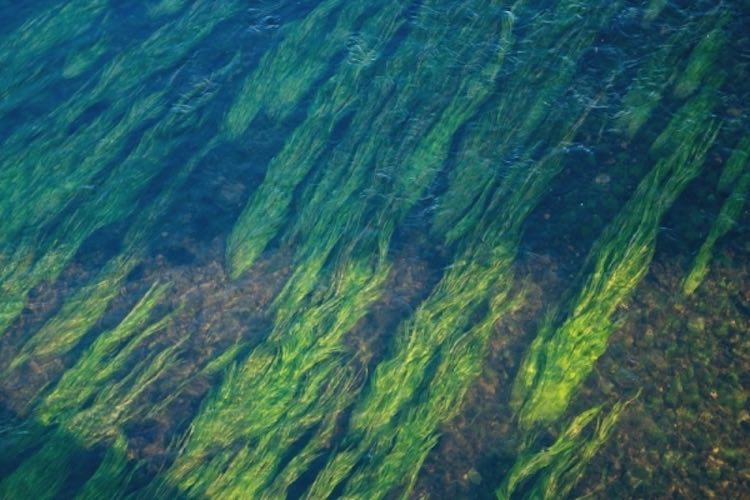Undersea algae could become the fuel of the future— and producing the valuable oil would not require any arable land or human drinking water.
The mechanism behind oil synthesis within microalgae cells has been revealed by a Japanese research team led by Professor Hasunuma Tomohisa and Academic Researcher Kato Yuichi, both from the Kobe University Graduate School of Science, Technology and Innovation.
CHECK OUT: Teenage Girl Turns Plastic Trash Into Million-Dollar Biofuel
Microalgae is produced by the combination of light, water, carbon dioxide and a small amount of minerals. Their cells divide quickly, which means it can be harvested faster than land-based biomasses, such as sugar or corn. Algae can also be harvested year-round, potentially offering a more stable energy supply.
Many species of algae are capable of producing large amounts of oil (lipids), but this is the first time that researchers have captured the metabolic changes occurring on a molecular level when lipids are produced in algae cells.
Focusing on marine microalgae, Professor Hasunuma’s group found that JSC4, a new species of green alga harvested from brackish water, combines a high growth rate with high levels of lipids. The research team developed an analysis method called “dynamic metabolic profiling” and used this to analyze JSC4 and discover how this species produces oil within its cells.
RELATED: People Willing to Pay 11% More For New Biofuels That Help the Earth
Professor Hasunuma’s team incubated JSC4 with carbon dioxide as the sole carbon source. 4 days after the start of incubation, over 55% of cell weight consisted of carbohydrates. When saltwater comprised 1-2% of the incubation liquid, the team saw a decrease in carbohydrates and increase in oil, and 7 days after the start of incubation over 45% of cell weight had become oil.
With a high cell growth rate, the lipid production in the JSC4 culture solution achieved a speed that greatly surpassed previous experiments. At the start of the cultivation period starch particles were observed in the cells, but in saltwater these particles vanish and numerous oil droplets are seen.
Using dynamic metabolic profiling, the group found that the sugar biosynthesis pathway (activated when starch is produced) slows down, and the pathway is activated for synthesizing triacylglycerol, a constituent element of oil. In other words, the addition of seawater switched the pathway from starch to oil production. They also clarified that the activation of an enzyme that breaks down starch is increased in saltwater solution.
The discovery of this metabolic mechanism is not only an important biological finding, it could also be used to increase the production of biofuel by improving methods of algae cultivation. Based on these findings, the team will continue looking for ways to increase sustainable oil production by developing more efficient cultivation methods and through genetic engineering.
Grow Some Positivity: Click To Share




















